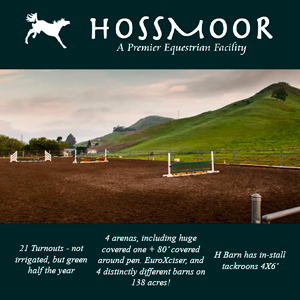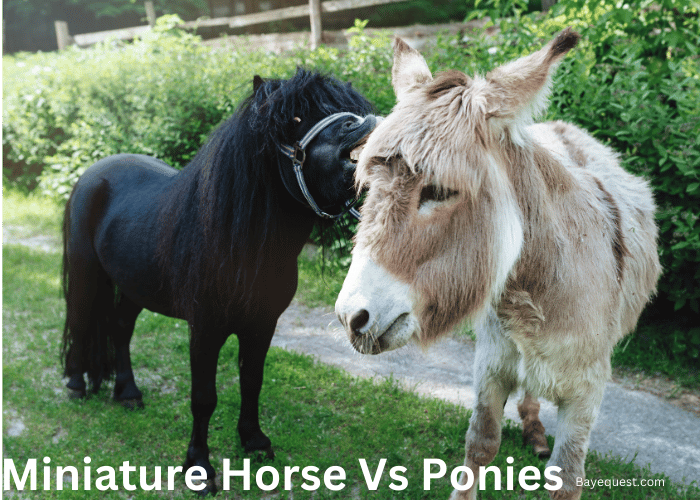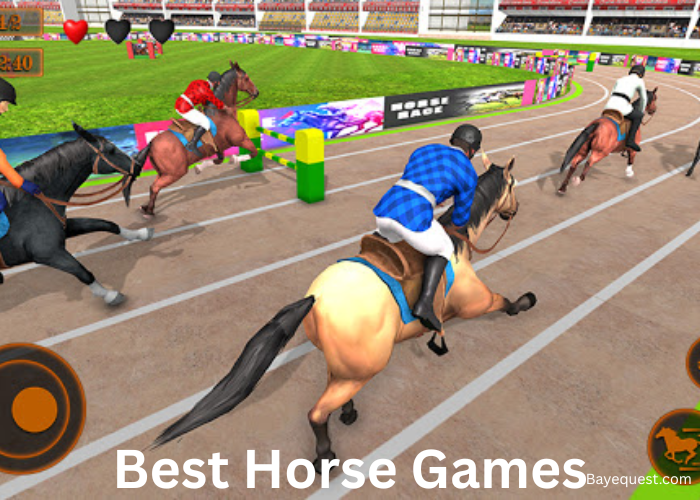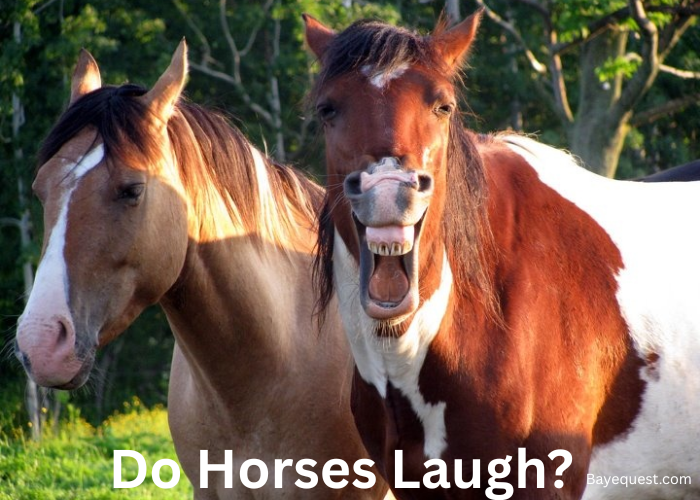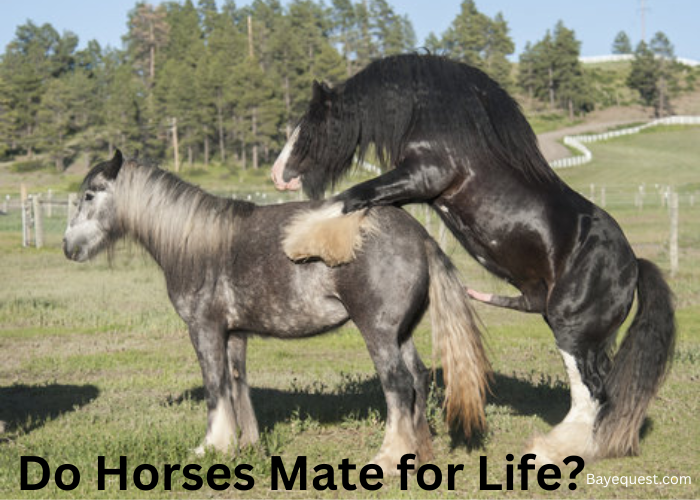There’s no better sight than watching your little ones playing ball games with a pony or mini horse. It’s one of the most memorable experiences.
The tiny breeds are exceptional companions. They are sweet, caring, and trustworthy. Above all, they’re excited around kids.
However, sometimes, we’re so lost in the games that we forget whether that tiny horse is a miniature or a pony. Some people don’t even care.
But you should, as it helps you take better care of your stock. We’ve prepared this guide to help you differentiate the two.
Miniature Horses Vs Ponies: Key Takeaway
A pony is any equine under 14.2 hands (58 inches) tall. In contrast, a miniature horse is measured in inches and stands no taller than 38 inches (9.5 hands). Unlike ponies, miniature horses have proportional body structures similar to those of full-sized horses, but are smaller, resembling large dogs in terms of size.
What is a Miniature Horse?
Miniature horses are the tiniest of any horse breed. The maximum height depends on the registry. However, no registry accepts minis taller than 38 inches.
History and Origin of Miniature Horses
The history of the miniature horse is interesting. The earliest records indicate that King Louis XIV of France owned a few in his zoo. Similarly, the mini horse was a prized companion among the affluent.
Strangely, the tiny horses also worked in coal mines in England and Northern Europe, pulling carts from underground tunnels inaccessible to humans.
Unfortunately, there wasn’t much else about them until the 1800s when they arrived in the US for coal-hauling duties. The first miniature horse in the US was a 31-inch-tall Shetland pony named Yum-Yum.
Miniature Horses Characteristics
It’s easy to pinpoint a miniature from a herd of horses. Begin by checking the height. Any horse under three feet at the withers is likely a miniature. Of course, some are a little taller. But the majority don’t exceed 36 inches when mature.
You can also tell minis by their body frames. A mini horse has a narrow chest, elegant neck, and dainty legs. However, the frame is more delicate than a pony or full-size horse.
Finally, minis are mostly pets and therapy animals. Bigger ones may pull carts. But they’re too tiny to carry adults.
Common Miniature Breeds
The Falabella and American miniature horses are the two most common mini horses in the US. American miniatures are slightly bigger, maturing at 34 inches. They are American natives with a refined look and come in many colors and patterns.
Meanwhile, the Falabella, originating from Argentina, is an extra-tiny horse, sometimes maturing at 28 inches. They’re novel horses mainly kept as companions for larger animals.
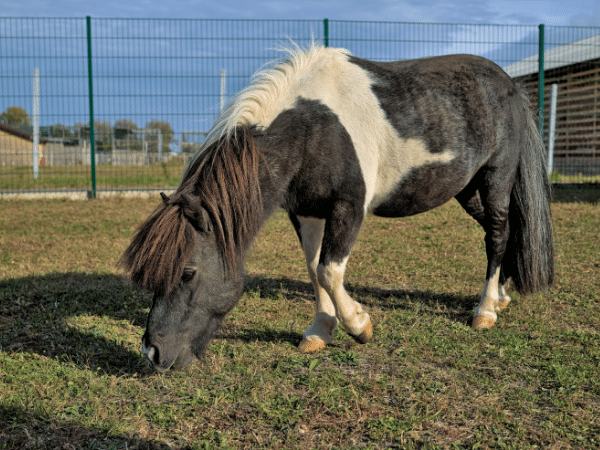
What are Ponies?
Ponies are also small horses. But they’re bigger than miniatures. The following are a few key points to note about them.
History and Origin of Pony Horses
Ponies were first developed in Northern Europe as land races adapted to harsh environmental conditions. They’re likely descendants of wild draft horses.
Exmoor ponies have the longest history, dating back to the 15th century when they were captured and trained to pull chariots in Britain.
However, the records are scant until 1818, when industrialist John Knight purchased the Royal Forest of Exmoor from the Crown.
Knight placed 30 ponies, now known as the anchor herd, in the forest, and the rest is history. Today, the Exmoor is among the most common pony breeds in the world.
Meanwhile, the Shetland pony originates from the Shetland Islands, located in northern Scotland. The story starts in the Bronze Age when Norsemen invaded the islands.
They brought back ponies, which they crossed with native stock, producing the Shetland pony.
Characteristics of Ponies
Again, size is the primary distinguishing factor between ponies and miniatures or regular horses. The pony lies in between.
It is larger than the average miniature but smaller than a full-size horse. Mature ponies reach 14.2 hands. However, the majority are between 13 and 14 hands.
Additionally, you’ll notice they’re stockier than miniatures and regular horses, with shorter legs and wider barrels. Moreover, the coats, tails, and manes are thicker.
Ponies are much stronger than miniatures. For example, a mature Shetland can ride with a fully grown human on its back. They are also extremely resilient, even more than the regular horses. However, they have a “rougher” appearance.
Common Pony Breeds
The three main pony breeds in the US are Shetlands, Welsh ponies, and Connemara ponies. Shetland ponies are the most popular.
They are medium-sized horses that grow to 42 inches tall, boasting a sturdy build with thick manes and tails. They’re mostly found in the US and Canada.
Meanwhile, Welsh ponies are native to Wales, though you can easily find them in the US. There are at least four categories of Welsh ponies. All four sub-breeds are intelligent, versatile, and elegant.
Finally, Connemara ponies are renowned for their power and athleticism in Ireland. They are well-tempered and generally friendly, making training easy. Connemara horses do well in jumping and dressage events.
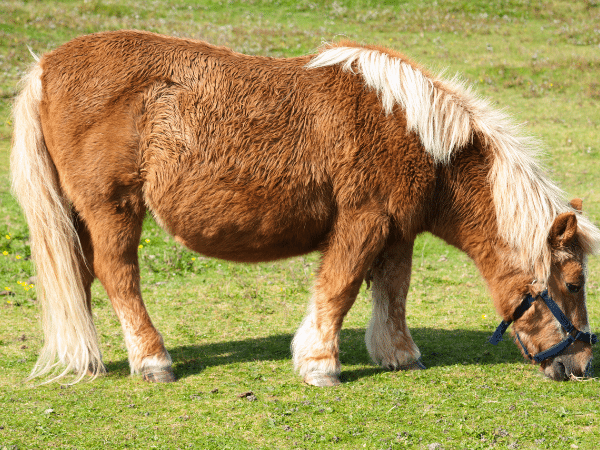
Ponies Vs Miniature Horses: Key Differences
Hopefully, you have enough information to make the right choice. The following is a side-by-side comparison if you need a little more help.
Miniature Horse vs Pony: Definition
Miniatures and ponies are not horse breeds per se. Rather, they are types of horses mainly defined by size. Miniatures are smaller, but ponies are only slightly ahead. Both are smaller than regular horses.
Unfortunately, the size requirements overlap. For example, although any horse below 14.2 hands qualifies as a pony, we regularly see normal horses below this size. Similarly, a few miniatures are taller than ponies. Always verify with the relevant registries for clarification.
More importantly, each category includes several breeds. For example, miniature breeds include the Falabella and the famous American miniature horse. Meanwhile, several breeds of ponies exist, including Shetlands, Exmoor, and Welsh ponies.
Miniature Horse vs Pony: Size
Miniatures are exactly what the name says – extra-tiny animals. The average miniature horse is 34 inches, equivalent to 8.5 hands.
However, a few registries accept miniatures up to 38 inches in height. Falabella minis are the tiniest, sometimes under 20 inches.
Meanwhile, the average pony measures just under 14 hands, with a 14.2 hh limit. The Connemara is among the biggest pony breeds, occasionally exceeding 14.2 hands.
Note that the miniature horse height is measured in inches rather than hands. However, you can easily convert inches to hands using the formula: 1 hand (hh) = 4.0 inches. Please check with the specific registries if you require further clarification.
Miniature Horse and Pony: Weight
Ponies are heavier than miniature horses. However, the differences vary from one horse to the next, even within the same breed.
The Falabella is the most lightweight mini horse, weighing as little as 70 pounds. However, fully grown Falabella minis can weigh as much as 140 pounds.
Meanwhile, the average American mini horse weighs 250 to 350 pounds.
Ponies can be up to three times heavier. Shetlands, for example, weigh between 220 and 280 pounds, depending on the height.
Meanwhile, Dartmoor ponies weigh 310 to 330 pounds. Connemara ponies are generally the heaviest, weighing up to 400 pounds.
Pony vs Mini Horse: Temperament
Both ponies and miniature horses are calm and well-mannered. Furthermore, both are easy-going for trouble-free training.
However, ponies are more approachable than mini horses. That’s why kids get used to them faster than other horses.
They’re sweet and friendly. Moreover, ponies are extremely cooperative, patient, and tolerant. Welsh ponies are the best, always keen to build blissful bonds.
Mini horses are sweet, too. Moreover, their tiny frames make them the least intimidating horses. So, you and your kids will have a great time with your new mini.
However, like their full-sized counterparts, some training is necessary to make the mini horse fully cooperative.
Miniature Horse vs Pony: Riding and Other Disciplines
Pony and miniature horse disciplines overlap. But you can expect the pony to handle a wider range of tasks, thanks to the bigger and stronger frame.
First, a fully grown pony is rideable, even by adults, provided the rider is no more than 20% of the horse’s weight. Ponies also reside on farms and ranches, where they assist with manual labor.
Alternatively, you can register your pony with the US Pony Club to participate in dressage and riding events.
Unfortunately, adults cannot ride mini horses, although children under nine may be allowed to ride on the saddle. However, few animals are better companions than the mini horse. Additionally, miniatures are exceptional therapy animals.
Miniature Horses and Ponies: Common Breeds
Many breeds fit the descriptions of pony and miniature horse. However, some breeds are native to specific countries and haven’t crossed borders much.
Others are also very rare. We can only focus on the breeds you’ll easily find in the US.
The American mini is the most popular when shopping for a mini horse. However, you can also request a Falabella from a reputable breeding facility. Most facilities ship them from South America.
Meanwhile, the Shetland is the most popular pony in the US. You can easily find one at your nearest breeding facility.
However, you can also ask for the Welsh, New Forest, Dartmoor, Burmese, or Exmoor, among other pony breeds.
Read also: How to breed a horse.
Mini Horses and Ponies: Registries and Associations
Consider the related registries and associations when shopping for a pony or mini horse.
Registries are great places to find horses at a discount. More importantly, they verify breeds and register horses.
So, they’ll tell you if your horse is legit. Meanwhile, horse associations are valuable resources for meeting like-minded people to share ideas and discover opportunities.
We prioritize the American Miniature Horse Association (AMHA) or American Miniature Horse Registry (AMHR) for minis. Meanwhile, the North American Sports-Pony Registry is the biggest pony registry in the US. You can also visit breed-specific registries, like the Dartmoor Pony Registry of America.
Miniature Horse vs Pony: Where to Find
Miniatures and ponies are equally easy to find. Always start your search by asking for referrals from family and friends. Someone probably knows where you can find a great discount. If you fail, consider breeders, stables, and auctions as alternatives.
Most breeders specialize in specific breeds. So, you want to find a pony or mini horse breeder, depending on your needs.
However, they can refer you to other resources if they are unable to fulfill your order. Meanwhile, stables offer more variety but may only offer a few members for sale at any time.
That makes auctions and online sales the best places to find ponies and mini horses. Start with Google and then graduate to social media networks as you expand your reach.
Mini Horse vs Pony: Price
Ponies are more expensive than miniature horses, though individual prices vary widely. You can find either for as little as $1,000 or as much as $ 10,000 or more. However, most ponies are on the higher end of the scale.
If you’re shopping in the $2,500 to $5,000 range, you’ll find as many ponies (47%) as miniature horses (49%). However, within the $5,000 to $10,000 range, ponies dominate. For every miniature horse, you’ll find seven ponies.
Nonetheless, the best ponies cost upwards of $10,000. They comprise about 18% of equine listings above $10,000.
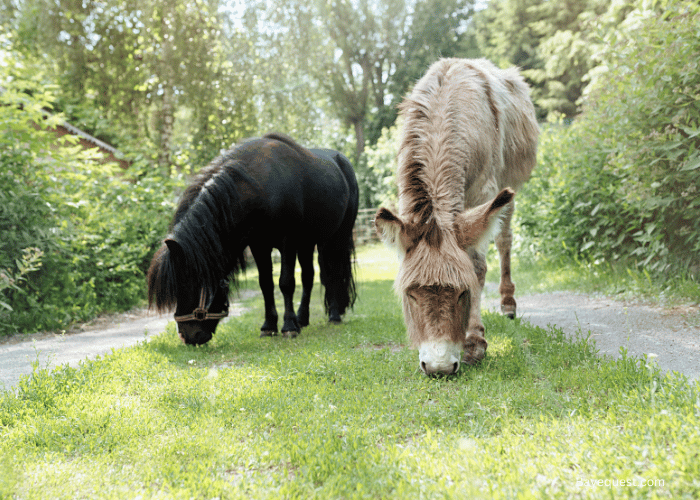
Difference Between Mini Horse and Pony: FAQs
Are ponies horses?
Yes and no. Generally, smaller versions of full-size horses are known as miniatures or mini horses – not ponies. However, ponies are also smaller than regular horses, albeit bigger than minis. That said, minis resemble regular horses more. Meanwhile, ponies are rougher, with shorter legs and thicker coats.
Can you ride a mini horse?
No, adults must never ride mini horses. The rule of thumb is that horses must carry at most 20% of their weight. Unfortunately, a mature adult weighs the same as a tiny miniature. However, most children under nine years old can safely ride mini horses.
What’s the smallest horse breed?
The Falabella is the smallest horse breed. It’s an Argentine miniature breed, with heights ranging from 63-86 cm (25-34 inches) at the withers. This is equivalent to 6.1 to 8.2 feet. Unsurprisingly, Falabella horses are calm, docile, and easy-going. They are also hardy and long-lived.
What’s the Difference Between a Pony and a Miniature Horse? Conclusion
Though often confused, ponies and miniature horses differ in many ways, from size to temperament. The prices vary too.
The best investment depends on your needs. Consider a mini horse if you want the smallest horse possible or are on a tight budget.
You should also consider minis for kids’ pets. Meanwhile, ponies are a great choice if you prefer a near full-size horse at a fraction of the budget.



